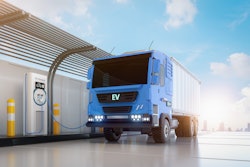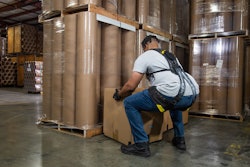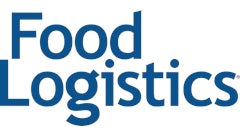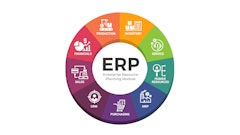
Managing a truckload network has never been more complex. Navigating a vast array of data points, economic forces, consumer demand, and seasonality, among other factors, influence decisions at all levels. Enterprise trucking companies that resist using technology and rely on manual processes struggle to keep up – leaving teams overwhelmed and opportunities untapped.
Decision automation is emerging as a critical solution for addressing these challenges. By automating decisions around optimized freight planning, sourcing, and dispatching, organizations can allocate resources more effectively and focus on higher-value strategic initiatives. Real-world examples of implementing decision automation intelligence resulted in immediate quantifiable impact, between a 13-20% increase in revenue per truck per week, a reduction in network siloes and empty miles, and smarter, more reliable dispatch decisions using less manpower. A report from Deloitte shows that roughly 80% of AI adopters report extremely high or high economic value in each use case.
From strategic planning to real-time dispatching, decision automation equips organizations to thrive in an increasingly competitive marketplace. Here are six ways technology supports smarter decisions and better results for enterprise trucking operations.
1. Optimized decisions
The trucking industry faces a widespread challenge: the limitations of relying solely on human intuition, experience, and manual methods. Dispatchers, often working under significant pressure, have historically managed load planning and execution based on their individual expertise. However, with increasing industry demands and rapid technological advancements, this traditional approach is no longer sufficient to maintain a competitive edge.
Implementing decision automation in trucking operations enables dispatchers to make informed, data-driven decisions. By analyzing factors such as network-wide commitments, driver preferences, and potential uncertainties, automation provides dispatchers with clear guidance to optimize driver-to-load assignments. This approach not only enhances operational efficiency but also contributes to increased revenue.
2. Streamlined operations
Operational complexity is a common challenge in the trucking industry. Teams often juggle numerous manual processes, from load planning and dispatching to problem-solving, which can stretch resources thin. These inefficiencies not only strain staff but also limit the potential for growth. Automation addresses these issues by enhancing productivity, consolidating tasks, and freeing up valuable resources.
This shift enables organizations to redirect resources toward higher-value activities, allowing them to accomplish more with fewer resources. The result can be transformative: roles are redefined, employees are empowered to focus on critical initiatives, and businesses can expand without the need for additional overhead. According to Smartsheet’s Automation in the Workplace Survey, employees spend an average of 40% of their work week on repetitive, manual tasks. Automation can recover much of this time, while enabling employees to work faster and smarter.
3. Centralized planning
For years, the trucking industry has been limited by region-specific planning, often resulting in inefficiencies and missed opportunities. Centralized planning, driven by automation, revolutionizes this outdated model, providing carriers with greater visibility and fostering coordination throughout their entire network.
With the right automation tools, your organization gains a comprehensive view of operations, eliminating silos and enabling decisions that take the entire network into account. According to McKinsey & Company, Global Supply Chain Insights, organizations using automation report a 30-50% improvement in visibility across their entire supply chain. This broader perspective allows for more strategic resource allocation, smarter driver assignments, and optimized load planning across all regions. The result is streamlined operations, fewer empty miles, and improved customer service.
Centralized planning focuses on breaking down the barriers between geographically or logically separated teams, reducing confusion and inefficiencies in trucking operations. By transitioning from isolated data to a unified optimization engine, automation can deliver confident, data-driven recommendations that improve both long-term strategies and day-to-day operational decisions across the entire network.
4. Consistent dispatching
Maintaining consistency in dispatch operations can be a challenge when each dispatcher brings their own skills, experiences, and approach to the table. For instance, some dispatchers prioritize minimizing empty miles, while others focus more on ensuring driver satisfaction.
This challenge is amplified by turnover. As dispatchers come and go, new hires face a steep learning curve. The process of achieving consistency becomes even more difficult as newcomers develop their own unique methods and adapt to the role.
Automation provides a reliable solution to this issue, particularly for larger trucking companies. At the organizational level, leadership can define key priorities, such as maximizing revenue, ensuring drivers are home on time, and prioritizing high-value customers. These priorities are then translated into parameters that are applied uniformly across all dispatch decisions, ensuring consistent outcomes with the help of an automated system.
5. Reduced turnover
Dispatching is a high-pressure job, and due to the demanding nature of the role, turnover is inevitable. However, trucking companies can implement strategies to reduce turnover and retain their top talent.
By integrating automation into load planning and dispatching, companies can significantly reduce manual tasks and the stress that comes with them. While the job will always have its challenges, automation can help create a more manageable and supportive environment for dispatchers, ultimately helping to reduce turnover over time.
Similarly, life on the road for truck drivers can be tough, but decision automation in the back office can make their experience more manageable. Drivers have varying needs depending on their domicile, preferred schedules, and goals. Some are committed to long hauls, while others prefer regional routes. Some prioritize maximizing miles, while others focus on getting home on weekends.
Managing these diverse needs is a major challenge for large trucking companies. Automation offers a solution by optimizing decisions that take into account critical driver parameters, such as hours-of-service (HOS), home time preferences, and locations. This leads to more consistent assignments, better load planning, and ultimately, happier drivers.
6. Increased profitability
In the highly competitive trucking industry, profitability depends on operational efficiency, optimal resource use, and effective decision-making. Automation plays a crucial role in improving profitability by helping carriers reduce costs, optimize resources, and enhance margins without increasing headcount.
Automating key processes like load allocation and dispatching allows trucking companies to make data-driven decisions that boost profitability at every level. By streamlining operations, companies can:
● Lower operational costs by eliminating inefficiencies and optimizing workflows.
● Increase revenue per truck by improving decision adherence
● Manage higher freight volumes without needing additional resources, ensuring profitability scales with business growth.
Automation drives revenue growth by enabling companies to accomplish more with fewer resources, transforming cost centers into profit-generating areas. Through the use of advanced algorithms and real-time data, automation helps trucking companies operate more efficiently, ensuring each decision positively impacts the bottom line.




















